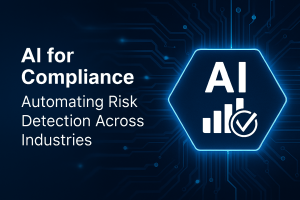AI for Compliance: Automating Risk Detection Across Industries
Artificial intelligence is reshaping the field of compliance by automating risk detection and management across industries. In 2025, the use of AI for legal and regulatory compliance is no longer an emerging trend but an operational necessity. Organizations across sectors rely on legal AI to monitor regulatory changes in real-time, analyze risks continuously, and automate […]



